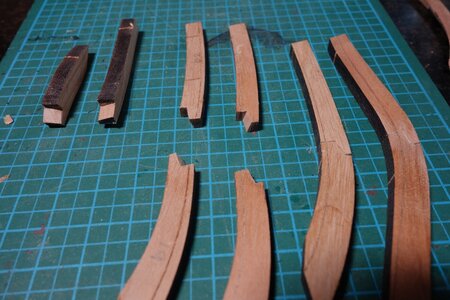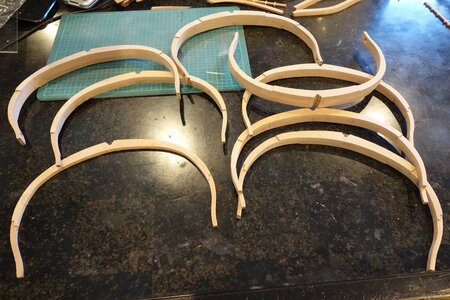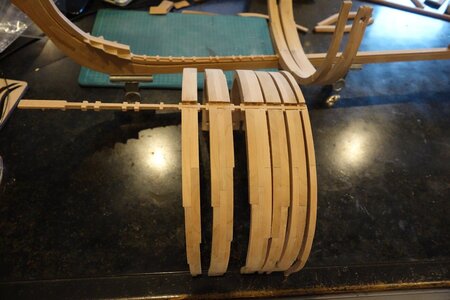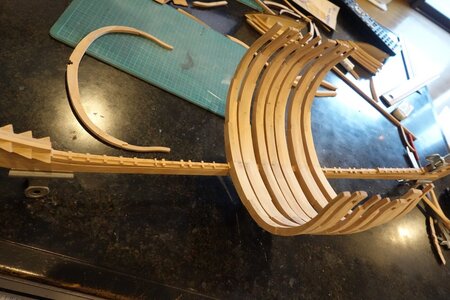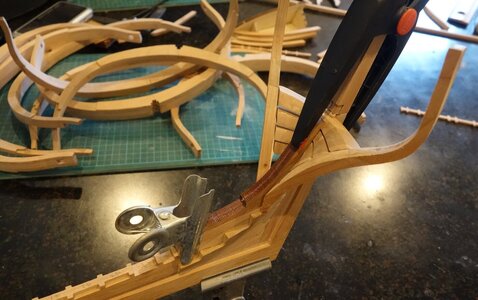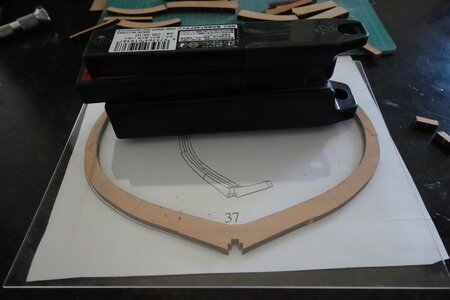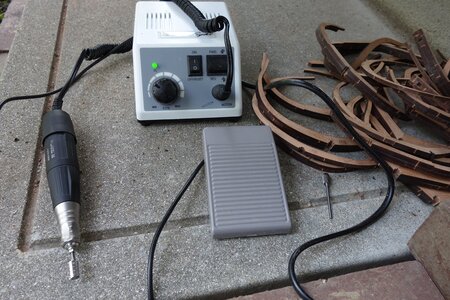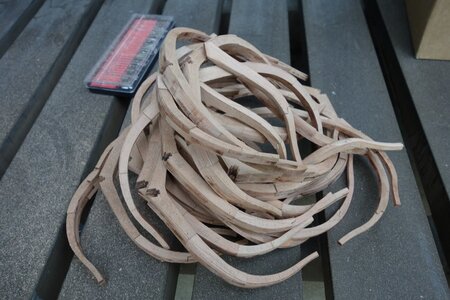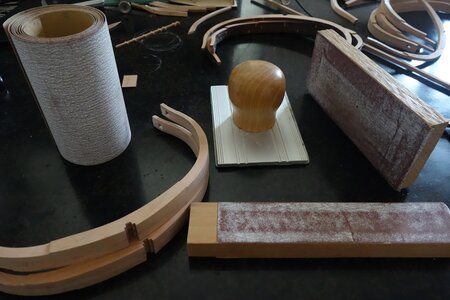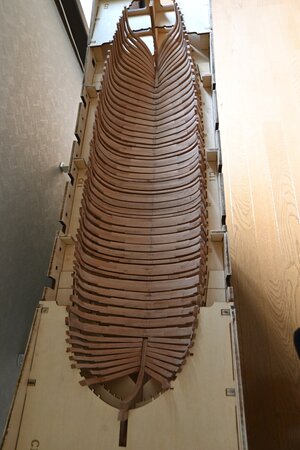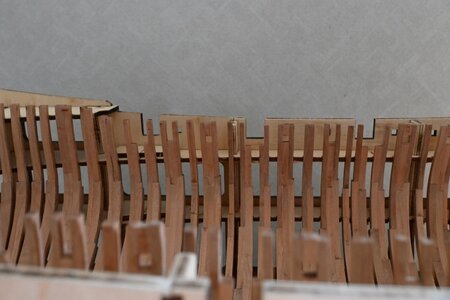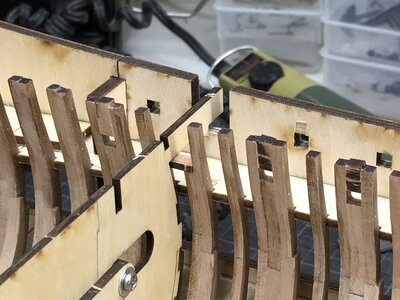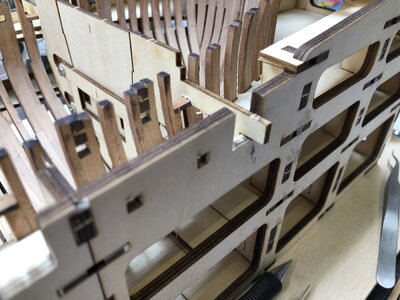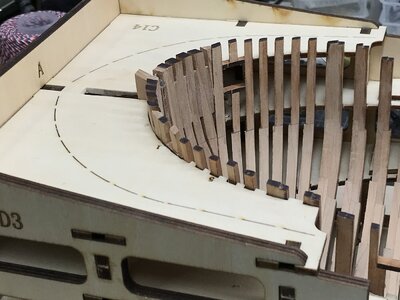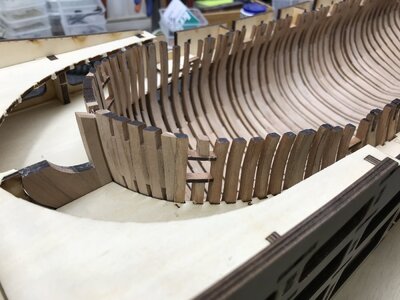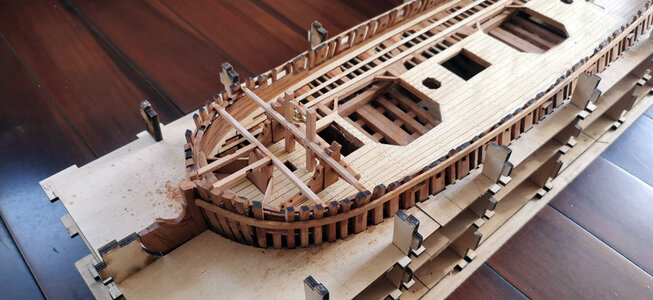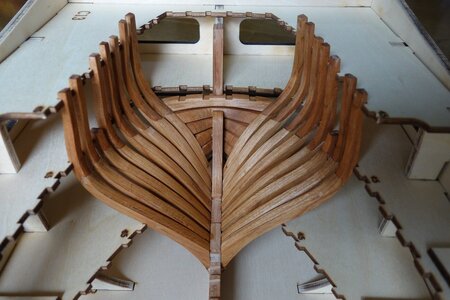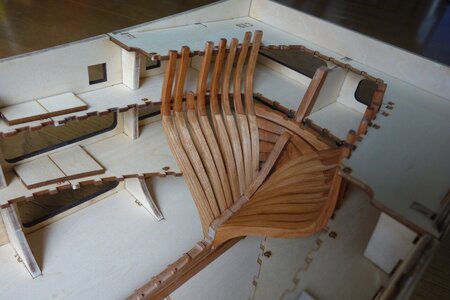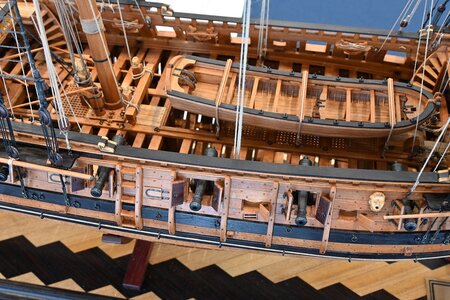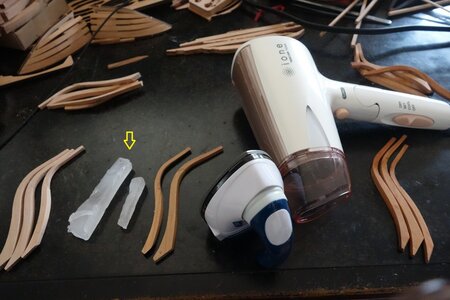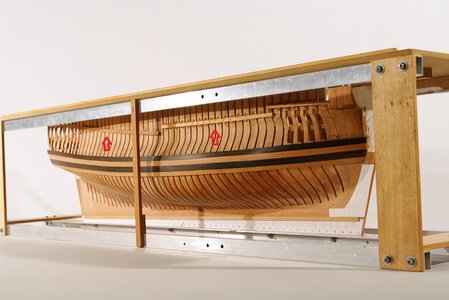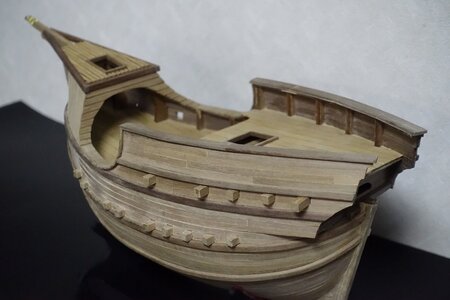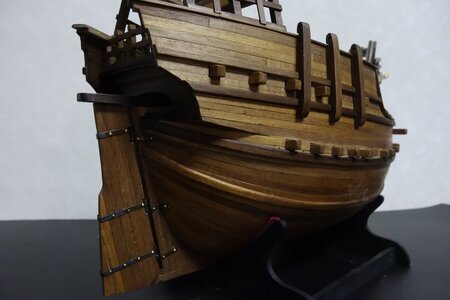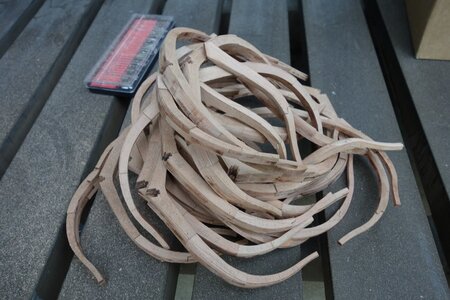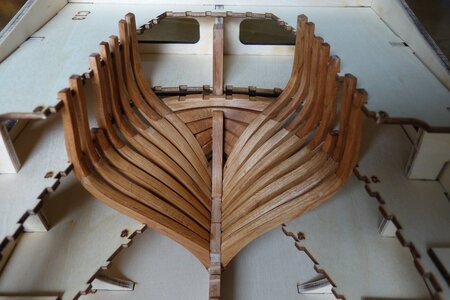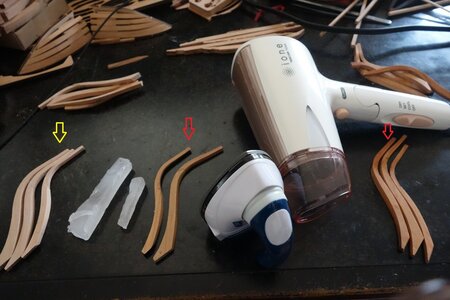All parts No. 1 ~ 3 are available
No.3 parts are quite substantial.
There is only one drawing for part No.3.
All drawings other than the frame have only side views and vertical views.
I want a cross section.
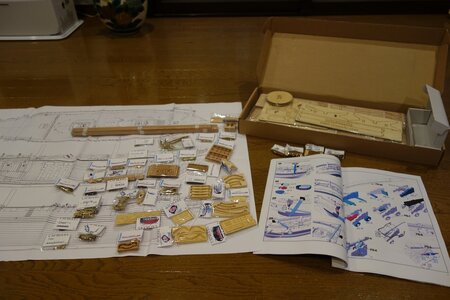
The figure head is 1/48, which is small but has a good face.
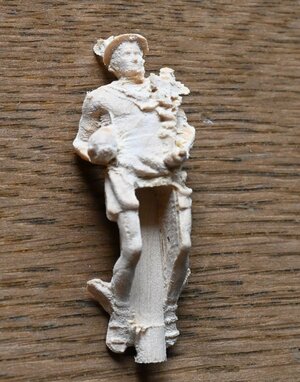
I want a little more power.
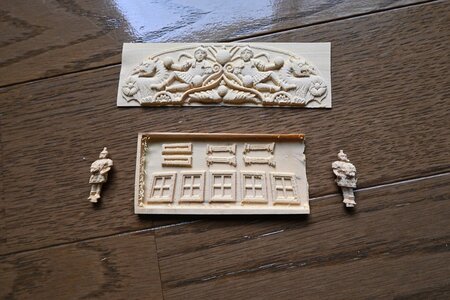
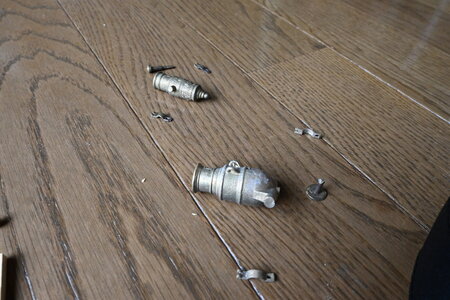
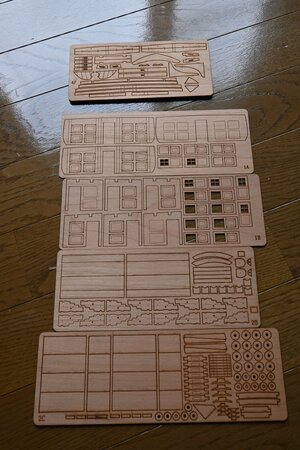
Production has started.
The museum model that this kit is aiming for is attractive, so I would like to divide it into upper and lower parts, but since the protrusions on the frame of the lower hull are ugly in the method of specifying the kit, when dividing it, I will assemble the hull with a thin saw and then cut it. is.
First of all, soot removal.
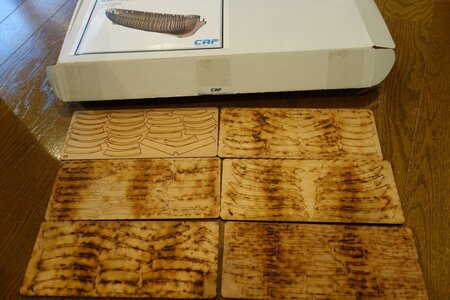
The keel is difficult to adjust because there is a gap between the parts.
When parts 1A-1, 1A-2 and 2A-12 were pasted together, it became too thick and 1A-1 was almost scraped.
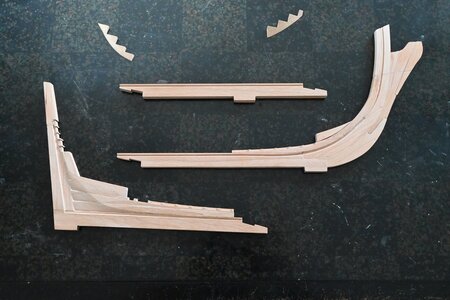
No.3 parts are quite substantial.
There is only one drawing for part No.3.
All drawings other than the frame have only side views and vertical views.
I want a cross section.

The figure head is 1/48, which is small but has a good face.

I want a little more power.



Production has started.
The museum model that this kit is aiming for is attractive, so I would like to divide it into upper and lower parts, but since the protrusions on the frame of the lower hull are ugly in the method of specifying the kit, when dividing it, I will assemble the hull with a thin saw and then cut it. is.
First of all, soot removal.

The keel is difficult to adjust because there is a gap between the parts.
When parts 1A-1, 1A-2 and 2A-12 were pasted together, it became too thick and 1A-1 was almost scraped.




